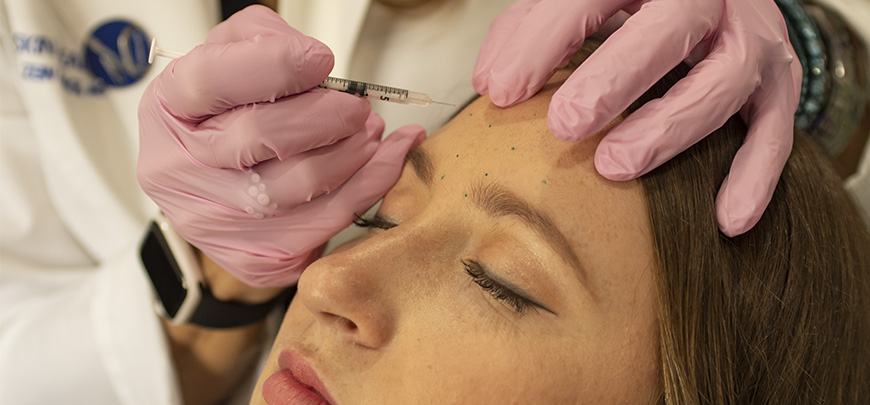Botox

The primary use of Botox is reducing the appearance of facial wrinkles. Botox blocks signals from the nerves to the muscles. The injected muscle can't contract. That makes wrinkles relax and soften. According to the American Board of Cosmetic Surgery, Botox injections are the most popular cosmetic procedure nationwide.
Botox injections are also used to treat conditions that affect how the body functions, such as chronic migraine headaches. The effects are temporary, lasting 3–5 months, depending on the type of treatment. Having Botox injected requires minimal time. You won’t need anesthesia. The provider uses a small needle to inject Botox into specific muscles with only minor discomfort.
FAQ
There is generally no downtime associated with Botox treatments. Immediately following the procedure, patients are generally able to resume normal activities, but it is suggested not to lay down for the next four hours or do any strenuous physical activities over the same 4-hour period.
You may have some temporary side effects after a Botox injection. These could include bruising, headaches, eye dryness, discomfort at injection sites or numbness.
Botox injections usually begin working three to seven days after treatment. Depending on the problem being treated, the effect may last three months or longer. To maintain the effect, you'll need regular follow-up injections, which varies with each person between 3-5 months.

